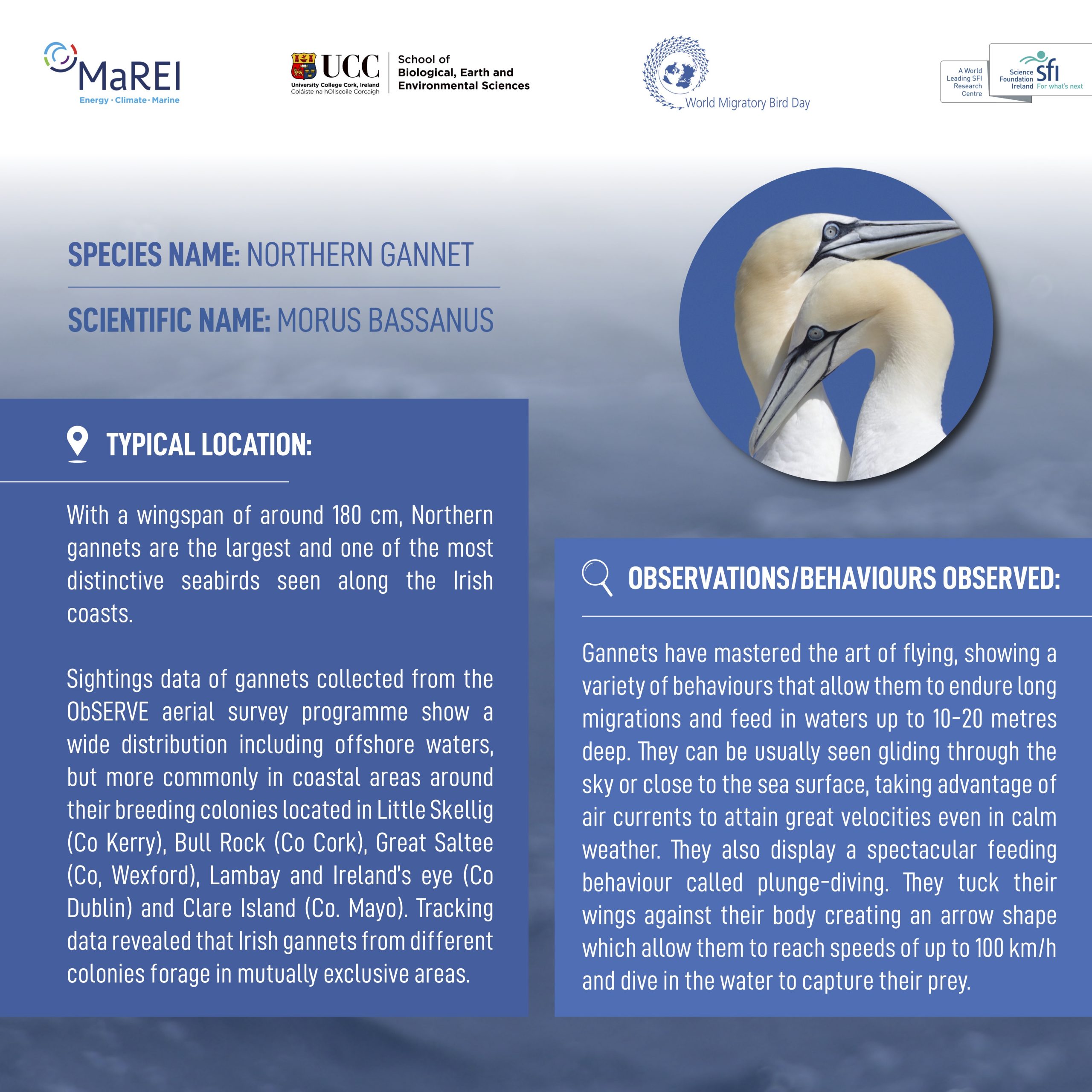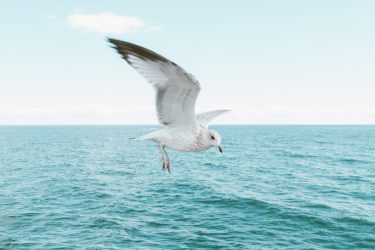
World Migratory Bird Day

As part of the ObSERVE II project, our researchers have been monitoring Northern Gannets and for World Migratory Bird Day they are sharing their observations. The ObSERVE Programme, undertake surveys for marine megafauna in Irish offshore waters. The purpose of these surveys is to estimate and describe animal density, abundance, and distribution.
Species name: Northern Gannet
Scientific name: Morus bassanus
Typical location: With a wingspan of around 180 cm, Northern gannets are the largest and one of the most distinctive seabirds seen along the Irish coasts. Sightings data of gannets collected from the ObSERVE aerial survey programme show a wide distribution including offshore waters, but more commonly in coastal areas around their breeding colonies located in Little Skellig (Co Kerry), Bull Rock (Co Cork), Great Saltee (Co, Wexford), Lambay and Ireland’s eye (Co Dublin) and Clare Island (Co. Mayo). Tracking data revealed that Irish gannets from different colonies forage in mutually exclusive areas.
They also undertake long migrations, the direction and length of which depends on their reproductive status. Juveniles and non-breeders will migrate to the western coast of Africa or the Western Mediterranean Sea during non-breeding season, whereas breeding adults tend to distribute more widely across the North Atlantic. While adult gannets will return to the same colony for the next breeding season, immature individuals can spend a couple of years away before returning to Irish waters.
Observations/behaviours observed:
Gannets have mastered the art of flying, showing a variety of behaviours that allow them to endure long migrations and feed in waters up to 10-20 metres deep. They can be usually seen gliding through the sky or close the sea surface, taking advantage of air currents to attain great velocities even in calm weather. They also display a spectacular feeding behaviour called plunge-diving. They tuck their wings against their body creating an arrow shape which allow them to reach speeds of up to 100 km/h and dive in the water to capture their prey.
In 2022, Northern gannets across Europe including Ireland were hugely affected by avian flu. More than a hundred dead gannets were recorded at sea during aerial surveys around Ireland’s largest breeding colonies on Bull Rock and little Skellig. Repeat gannet colony counts in Ireland will be needed in future breeding seasons to determine the true impact of avian flu on breeding populations.





